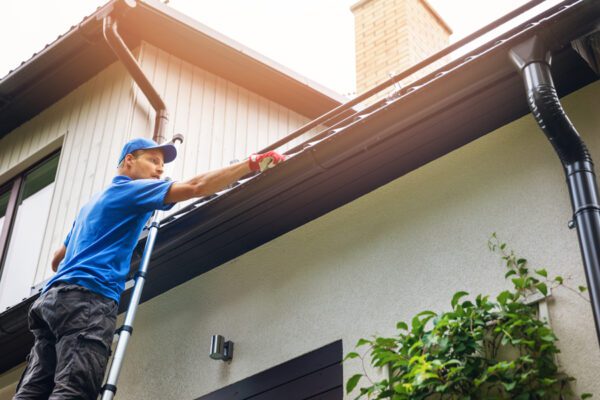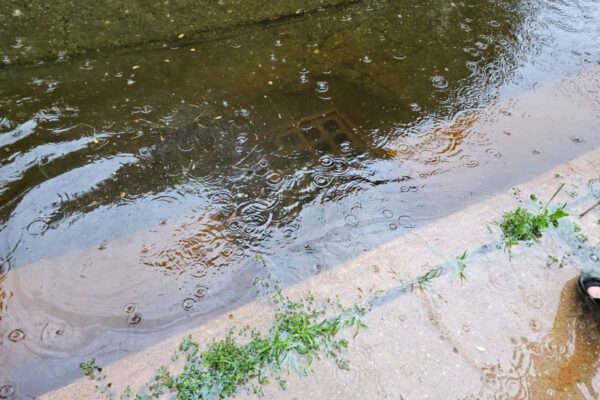By: Kevin Mershimer, Senior Sales Executive / Risk Advisory Solutions
An idle facility is any commercial space, such as an office building, warehouse, or manufacturing plant, which is no longer being used or has been shut down. Facilities may become idle for many different reasons, including:
- Corporate restructuring and mergers – corporate restructuring and downsizing, as well as mergers and acquisitions, can result in some facilities no longer being needed.
- Abandonment after a loss – after a loss, it may be easier to use alternative space than to rebuild.
- Changing marketplace – if demand for a product decreases, or the product becomes obsolete, production may be reduced or eliminated, which can lead to idle facilities.
- Labor unrest – strikes can lead to the temporary closing of facilities.
Generally, a facility that is no longer used, but is still worthy of being maintained for possible future use, requires loss protection identical to facilities that are fully functioning. Periodic (minimum weekly) inspections should be made to ensure that new fire loss exposures have not developed. The facility should be maintained under a comprehensive plan. This report provides information on managing fire loss exposures in an idle facility.
Preplanning
Preplanning for protecting an idle facility, though slightly different from preplanning for an existing facility, is essential. Since there are no employees in the facility to activate an Employee Action Plan and notify the fire department, the fire department response may be delayed. As such, it is important to notify the local fire department in advance that the facility is idle. The fire department should be informed of hazards that have not been removed. It should be made clear that if they are called, it is to be a priority response.
Protection Plan
Fire protection includes all activities that are intended to control a fire’s ability to grow and spread, such as building construction and sprinkler systems. The most fundamental approaches to reducing the fire hazard in any occupancy are to eliminate ignition sources, reduce fuel loading, maintain adequate fixed fire suppression systems, and secure the property from hostile and intentionally set fires. Inspecting sprinkler systems each month is required to ensure the system will activate adequately in a fire situation.
Elimination of Ignition Sources
To reduce ignition sources, present in an idle facility, all electrical equipment, except those vital for loss control, should be turned off. Electrical equipment vital for loss control includes security lighting, alarms, and heating equipment necessary for maintaining fire protection systems. The electrical systems that will remain active should comply with NFPA 70, National Electrical Code. At a minimum, those active systems should be inspected, before to idling or vacating the facility, to ensure that:
- Electrical conductors are securely fastened in place.
- Outlet and junction boxes are properly secured, covered, and without evidence of overheating.
- Extension cords are not in use.
- Electrical panels and branch circuit disconnects are freely accessible.
Heating systems should comply with NFPA 90B, Standard for the Installation of Warm Air Heating and Air Conditioning. Air circulation systems should be designed to shut down automatically in the event of a fire.
Proper maintenance of these systems will help to prevent overheating of motors, which could result in fires. Other factors to be considered include:
- Heating systems should be located in a separate area with a minimum fire-resistance rating of two hours.
- Return air ducts for heating systems should be at least 18 in (45.5 cm) above the floor.
- Return air supplies should not be drawn from areas where flammable liquids are stored.
Boilers that produce steam for heating present fire and explosion hazards. Gas- or oil-fired equipment should be provided with a manually operated emergency shutoff valve for the fuel supply. These valves should be prominently located, preferably outside the area of the operation, readily accessible, and in good working condition. Gas service should comply with NFPA 54, National Fuel Gas Code.
Fuel Reduction
The reduction of fuel sources begins with good housekeeping, which includes removing combustible waste, such as excess packing materials, etc. The presence of ignitable dust and static electricity can lead to devastating losses if not properly controlled. Good housekeeping practices should include a routine cleaning of all surfaces of any dust over 1/8 in (0.794 mm) in depth. This cleaning should consist of beams, ceilings, and hidden spaces above the equipment. Additional fuel reduction efforts may include:
- Removing flammable liquids from process equipment and storage drums, draining or covering tanks, and shutting off gas mains that are not needed.
- Removing pallets from the facility.
- Closing doors to prevent fire spread from one fuel group or area to another.
- Any salvage operations that require the use of a cutting torch should be carried out under the proper hot-work permit.
Fixed Protection
The fire protection features of a building, such as automatic sprinkler systems, standpipes, water supplies, firewalls, and alarm systems, should be used to their fullest potential. Fire protection systems, including automatic sprinklers, detection and alarm systems, and water supplies and its heating equipment, should continue to be regularly inspected (minimum monthly), tested annually, and maintained. This will ensure that the systems will work in the event of a fire. In the event of a fire to limit the spread of smoke and flames, the fire doors should be closed, where possible.
Areas in a facility where there is a water-based fire protection system, and in which temperatures may fall below 40°F (4°C), should be provided with heat.
Broken windows, ill-fitting doors, and other items that allow heat loss should be repaired. While heat can be provided by having the facility’s heating system maintained, at times, it may be more appropriate to shut down the heating systems and convert wet sprinkler systems to dry-pipe systems. The initial expense of changing over a system potentially pays for itself by providing energy savings and preventing future losses.
Intentional and Hostile Fires
Arson is a particular concern when a facility is idle. Historically, intentional set fires have accounted for more than 50 percent of the fires in these properties. Arson can result from mischief, vandalism, for economic benefit, or for covering up other crimes. The best defense against arson is adequate security measures, including security cameras, lighting, and fencing. Security measures to be considered include:
- When feasible, a fence should protect the perimeter of the property.
- All exterior areas of the property should be illuminated.
- At least a 30-ft (9-m) separation should be maintained between buildings and other exposures, such as automobiles, fuel tanks, outside storage areas, and high grass or wooded areas. Vegetation in this open area should be limited to well-irrigated small plants and grass.
- Combustible materials and trash in yard areas should be properly secured.
- Deadbolt locks should be installed on all exterior doors.
- Ground-level and below-grade windows, and other accessible openings, should be secured.
- Roof vents should be covered with corrosion-resistant screens.
- Exterior openings, including windows and doors, should have at least a 20-minute fire-resistance rating.
- Overhangs, eaves, and balconies should have at least a one-hour fire-resistance rating.
Conclusion
In summary, idle facilities require the same loss control considerations given to fully operating facilities. They should have fully functioning security systems that do not interfere with proper egress from the facility. Fire alarm and extinguishing systems should be properly maintained and supervised. Appropriate measures should be taken to reduce loss exposures (e.g., theft, fire, and flood) by removing valuable equipment, ignition sources, and fuels. Finally, the local fire department should be informed as to the particular hazards that remain in the idle facility.
.References
- Factory Mutual Insurance Co. Property Loss Prevention Data Sheet 9-1, Supervision of Property. Norwood, MA: FM Global, September 2005.
- International Codes Council (ICC). International Fire Code. 2006 ed. Falls Church, VA: ICC, 2006.
- National Fire Protection Association (NFPA). Fire Protection Handbook. 19th ed. Quincy, MA: NFPA, 2003.
- —. U.S. Fire Problem Overview Report: Properties That Are Vacant, Under Construction, Renovation Or Demolition. Quincy, MA: NFPA, 2003.
- —. Uniform Fire Code. NFPA 1. Quincy, MA: NFPA, 2006.
Material posted on this website is for informational purposes only and does not constitute a legal opinion or medical advice. Contact your legal representative or medical professional for information specific to your legal or medical needs.



